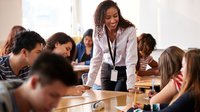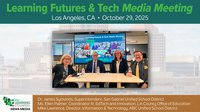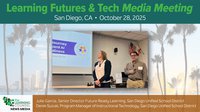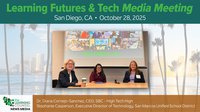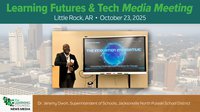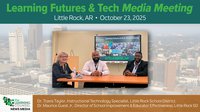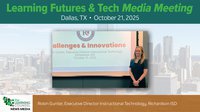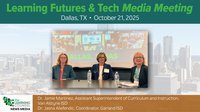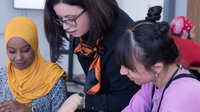It was beautiful sunny spring day in Richmond, VA., for their Digital Curriculum Discussion. The venue was the University of Phoenix, who also worked with the Learning Counsel last year in Richmond, to facilitate a smooth day of deep communication and collaboration about how to transform teaching and learning – how is it being done and what are the best tools and practices.
Photo Gallery of the Day in Richmond
“The amazing thing about the group of educators we met with in Richmond, VA.,” stated LeiLani Cauthen, “is that they are differentiating between types of pedagogies in terms of what they’re going to choose for digital curriculum. They’re already at the stage that a lot of other places are not at yet, which is, that they are asking how they are going to create teaching and learning difference in the classroom.”
While, of course, no district in the country is all the way there yet, the Richmond teams were not just shopping for things, they were using the day of discussion to consider options and think through the dynamics of the transition. Questions throughout the room showed how far into details and tactics these executives were.
The savviness of the Richmond leaders was clear during the Learning Counsel exercise to help them understand the complexity of selecting which digital curriculum and content to go with.
“It was the first city where, given three choices of options to reach digital curriculum coverage goal, no team went the route of ‘go digital while trying to spend no money or very little’,” stated Cauthen. “Attempting that route handicaps a district right at the starting gate. It was fantastic to see how they thought it all through and considered quality of digital options for the most coverage for their students.”
Towards the end of the day, during the leadership panel discussion, Amy Cashwell, the Chief Academic Officer of Virginia Beach City Public Schools, spoke to what the most positive and significant impact that digital curriculum and content has had for her district:
“I would start the answer first by saying that our transformation goes back about 10 years with a strategic plan that was built with a lot of critical thinking and problem solving to answer a ‘compelling why’. That was the start which has brought us to the point of more devices and platforms and resources and good momentum towards building a new institutional culture.”
“Now, just in the past year we began our next phase of the strategic plan around the concept of student-centered-learning. You might use that synonymously with personalized-learning and whether they mean exactly the same thing to everyone, I don’t know, but the hallmarks are there. So the idea that we’re trying to create a student-centered environment where we’re looking at student mastery and flexible learning environments that’ll allow them to show mastery in different ways, to progress on when they’re ready and not be held back by traditional rating systems. So we’ve begun exploring that work, the standards-based grading at our elementary level and committees really having conversations about what that should look like at the secondary level. So all of those conversations around globally competitive skills, what does it mean to create a student-centered learning environment that’s not just differentiated academically, but that meets student’s needs with respect to how they want to learn, where they want to learn, that honors their interests—and so it really, kind of, is that whole package of personalization.”


